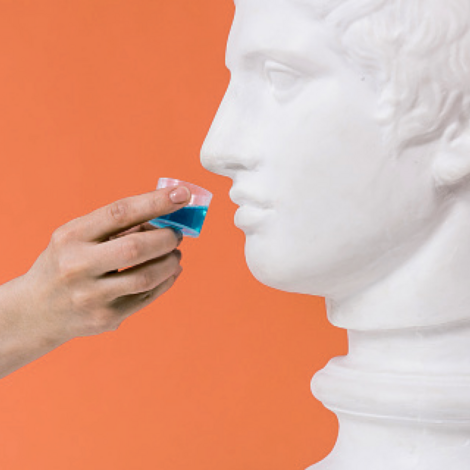Estée Lauder, the woman herself, once questioned the logic of night creams. “Your skin doesn’t know what time it is,” she reportedly said. She was full of bon mots like that, including her marketing strategy, which I heard her recite with my own ears: “Telephone, telegram, tell-a-woman.”
By the time telegrams became relics, beauty companies had embraced nighttime skincare with wild enthusiasm. The products centered around thick, heavy creams that took advantage of the fact that they didn’t have to play well under makeup or appear in public on the wearer’s face. In other words, the denser and slicker, the better. The only witnesses were your partner and your pillowcase. Soon enough, nighttime serums and lip masks joined the sleepover. You’d coat your face lavishly, as if frosting a Magnolia cupcake, and dream of a dewy, glowing tomorrow.
The TikTok world has its own ideas about what to do at night, including skin slugging, which involves layering your skin with products then adding a finishing touch of Vaseline, Aquaphor, or some equally occlusive goop with the hope of sealing everything in. When I asked Dr. Ellen Gendler, a New York dermatologist, about this, her response was an exasperated, “Oh my God, I can’t.”
But who doesn’t want to lie down doing next to nothing while your skin busily soaks up all those moisturizing ingredients? It’s a seductive idea.
The only problem is, it’s all wrong.
Mrs. Lauder was right that your skin can’t tell time like a proud 6-year-old, but it does follow the rhythms of chronobiology, the natural cycles of day and night. Scientists are discovering the way our biological clock influences metabolism and health, including the metabolism and health of your skin.
This is the territory of the scientists at Noble Panacea, the skincare brand based on the discoveries by Sir Fraser Stoddart, a Nobel Prize winner who designed molecules to perform certain tasks. His breakthrough had nothing to do with skincare—at first. He worked with chemists, who in turn found a way to load active ingredients into cavities in something they called OSMV, for Organic Super Molecular Vessels. “It’s almost like a cage where you would put a bird and then, at some point, you open the door and the bird flies away,” says Céline Talabaza, the CEO and co-creator of Noble Panacea.
But instead of a parakeet, imagine various skincare ingredients, each one 10,000 times smaller than a skin cell, allowing it to travel beneath the surface. The scientists program the molecule to “open at a certain moment, triggered by certain things,” says Talabaza. Those things include “the pH level of the skin, the water level, UV light, or friction.” By encapsulating the ingredients, they protect them from the environment and from irritating the skin.
Are you still with me? Let’s bring it back to night creams.
The problem with most of these creams is that, after about 40 minutes to an hour, they simply moisturize your skin rather than feed it with helpful active ingredients at different phases of cellular repair.
“At night while you sleep, your skin enters into its most active mode,” says Audrey Bois Nicolaï, the co-creator of Noble Panacea. “The first phase is called the detox phase, when the body removes the senescent cells that don’t divide properly. That’s what we call the zombie cells. Like zombies, they don’t disappear, and they really contaminate the other cells. They are a key factor of skin aging.” Yes, I’m familiar with that horror movie.
In the next phase, skin cell turnover accelerates. And at around 4 A.M., when your body temperature rises as it prepares to wake up, “your skin becomes more able to receive active ingredients,” says Talabaza. That’s when you want to flood the skin with ceramides and hyaluronic acid. “Nobody goes to the bathroom at 4:00 A.M. and says, Okay, I need to apply a serum now,” she adds.
That’s why Noble Panacea decided to load its new Peptide8 Night Serum with particular ingredients for each phase of the skin’s nighttime adventures.
Top that with the Chronobiology Sleep Mask, which also targets the skin’s different nighttime biorhythms, or feel free to add the encapsulated retinol in the Intense Renewal Serum, which releases small amounts over time, reducing the chance of irritation.
Using one of these serums could eliminate that layer cake of products and the petroleum glop to boot. Think of how streamlined your nighttime routine would be. Think of your unsullied pillowcase. It’s almost like a lullaby.
Linda Wells is the Editor at Air Mail Look





